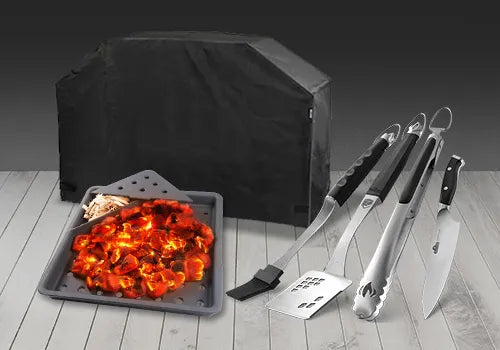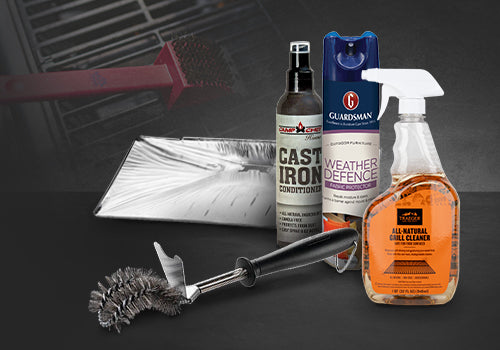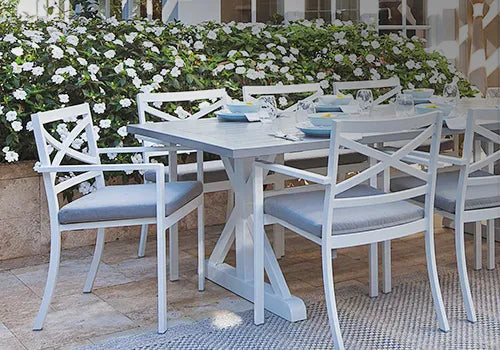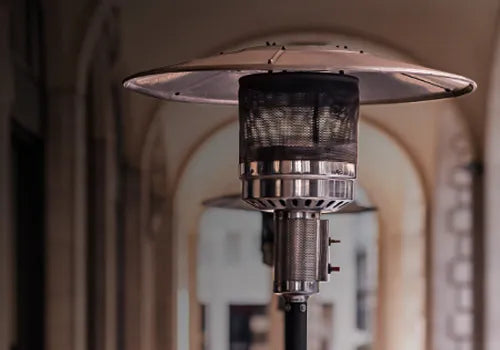Congratulations on your new BBQ smoker
You're about to embark on a journey of smoky, flavourful goodness. But before you throw on those ribs, there's a crucial step: seasoning your smoker.
Seasoning serves two important purposes. Firstly, it burns off any manufacturing residue or leftover chemicals that might impart unwanted flavors to your food. Secondly, it creates a protective layer on the smoker's interior, helping prevent rust and extending its lifespan.
Here's a step-by-step guide from Joes BBQs to seasoning your smoker for mouthwatering success:
Gather Your Supplies
- Dish soap and warm water
- Paper towels or clean rags
- High smoke point cooking oil (canola, grapeseed, avocado)
- Spray bottle (optional)
- Charcoal and wood chunks (same type you plan to use for smoking)
- Charcoal chimney (highly recommended)
- Thermometer
Cleaning is Key:Start with a clean slate. Give your smoker a good scrub down with warm water and dish soap. This includes the interior walls, lid, grates, and any removable components. Rinse thoroughly and allow everything to air dry completely.
Oil Up for Protection:Now it's time to create that protective barrier. Using a high smoke point oil, lightly coat the smoker's interior surfaces. This includes the walls, lid, grates, and even the firebox (if applicable). A spray bottle makes this process easier, but a rag works just fine too. Be sure to avoid the outside of the smoker.
Fire It Up!Let's get cooking! Fill your charcoal chimney and light it using a fire starter. While the coals get nice and hot, arrange some unlit coals in the smoker's firebox. Once the chimney coals are ashen grey and glowing, carefully pour them onto the unlit coals in the firebox.
Maintaining the Heat:Temperature control is important. With the vents fully open (intake and exhaust), allow the smoker to preheat. Aim for a temperature between 225°F and 300°F (110°C - 150°C) and maintain it for 2-3 hours. You might need to adjust the vents slightly to achieve this target temperature.
Smoke Signals: Adding Wood ChunksWant to add a smoky flavor? During the seasoning process, you can introduce wood chunks. Choose the same type of wood you plan to use for smoking meats later on. Add a few chunks at a time directly on the hot coals, allowing them to smoke. Pro Tip: If your smoker has a designated wood chip feeder, use that instead of placing wood directly on the coals.
Cooling Down and What's Next:Once the smoker has reached its target temperature and held it for the desired time, turn off the vents and let it cool down completely. This can take several hours.
Congratulations! Your smoker is now seasoned and ready to take on the tastiest meats and vegetables. Here are some additional tips:
First Smoke: For the first proper smoke, consider using something disposable like disposable aluminum foil pans to catch any drips or residue that might linger from the seasoning process.
Cleaning Routine: Make cleaning your smoker a regular habit. After each use, wipe down the interior surfaces while they're still warm to remove any leftover food particles.
Re-seasoning: Over time, your smoker's seasoning layer might wear down. If you notice food sticking excessively or a decline in smoke flavor, repeat the seasoning process.
With proper care and seasoning, your smoker will be your partner in creating delicious, smoky masterpieces for years to come. So fire up that smoker, and get ready to impress your taste buds and those of your fellow food enthusiasts!
If you need any more handy tips to getting the most out of your smoker, contact the friendly team at Joes BBQs on
02 9737 9799 or you can visit us in store at 142 Silverwater Road , Silverwater NSW




















